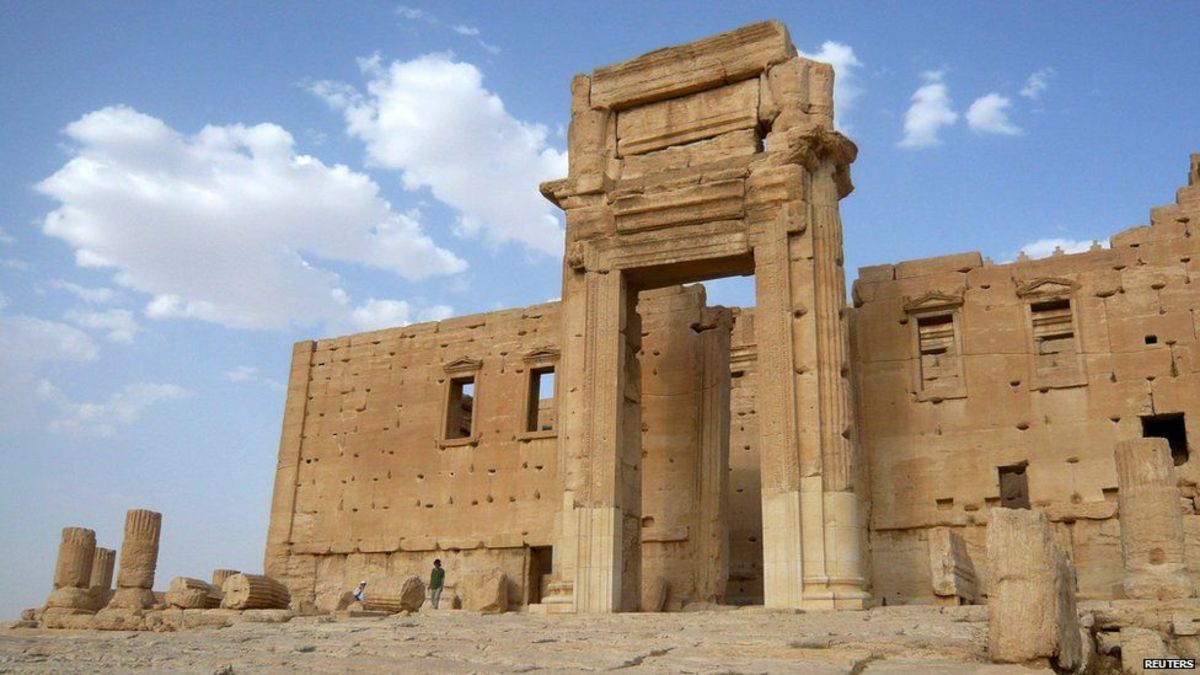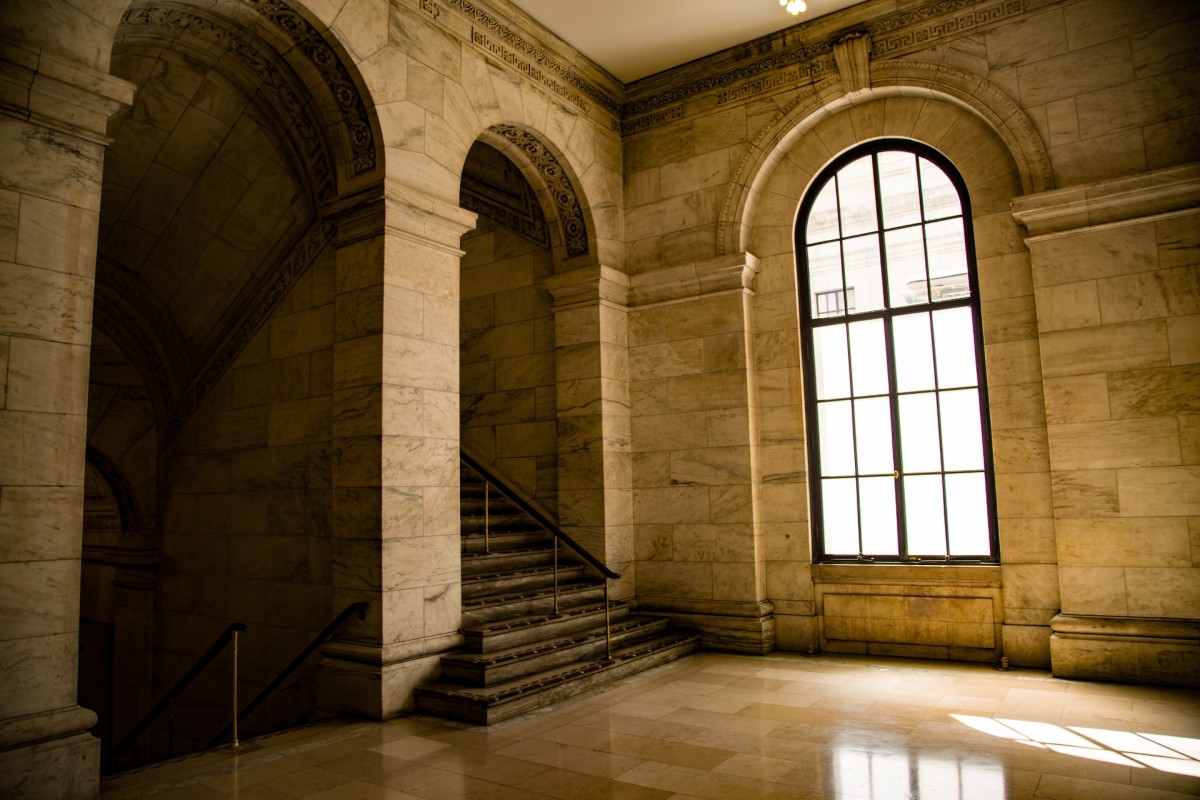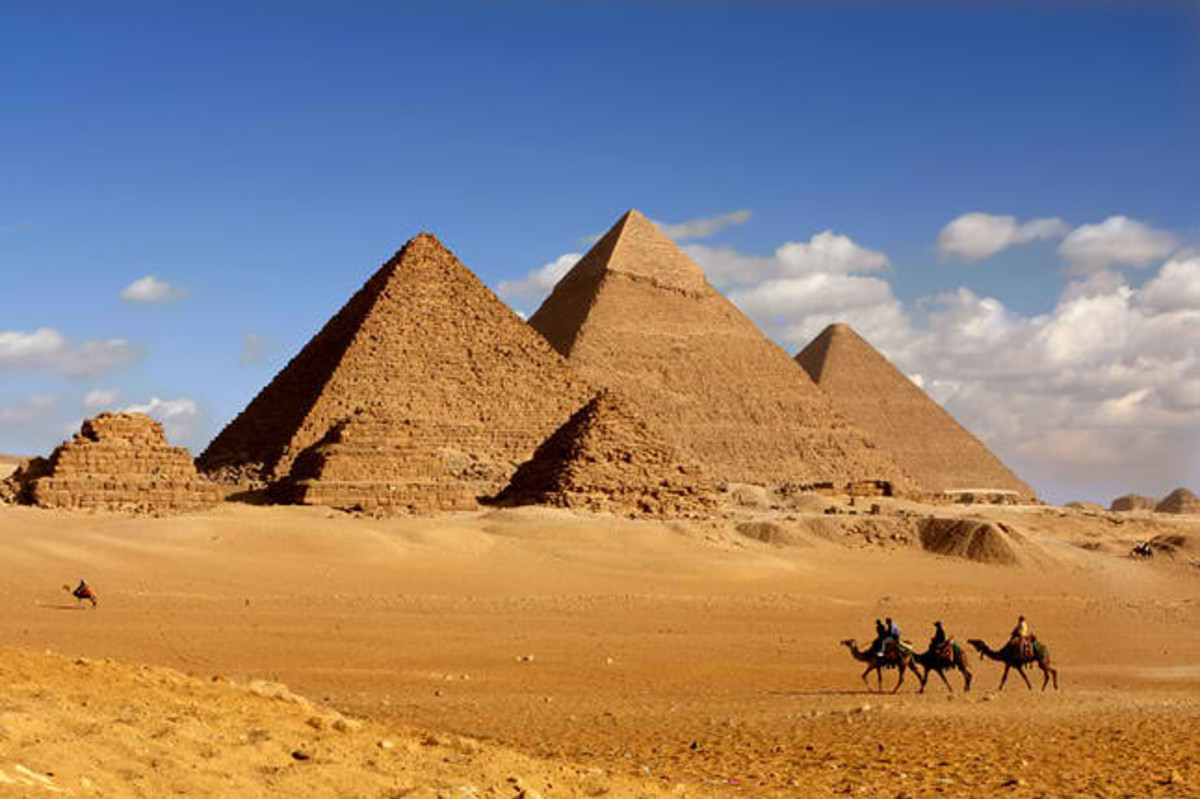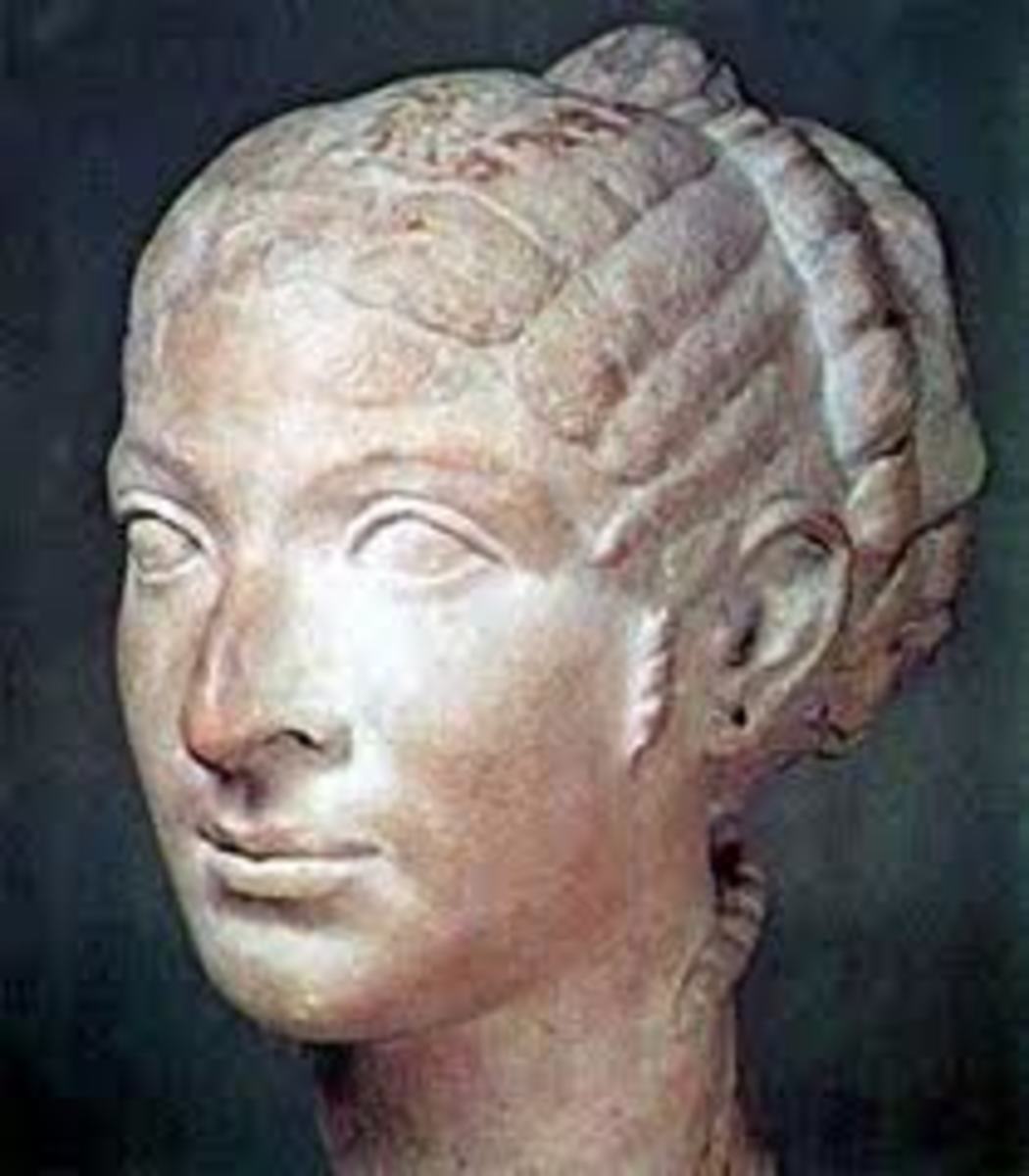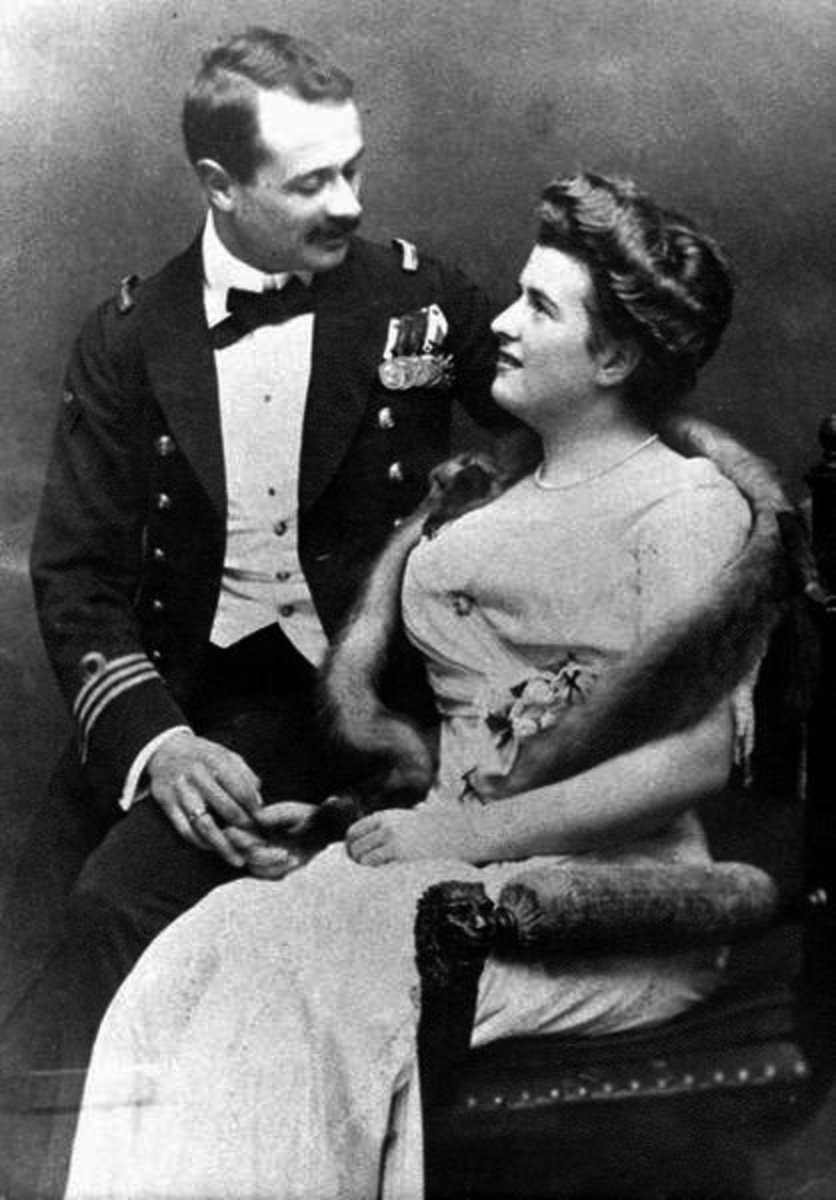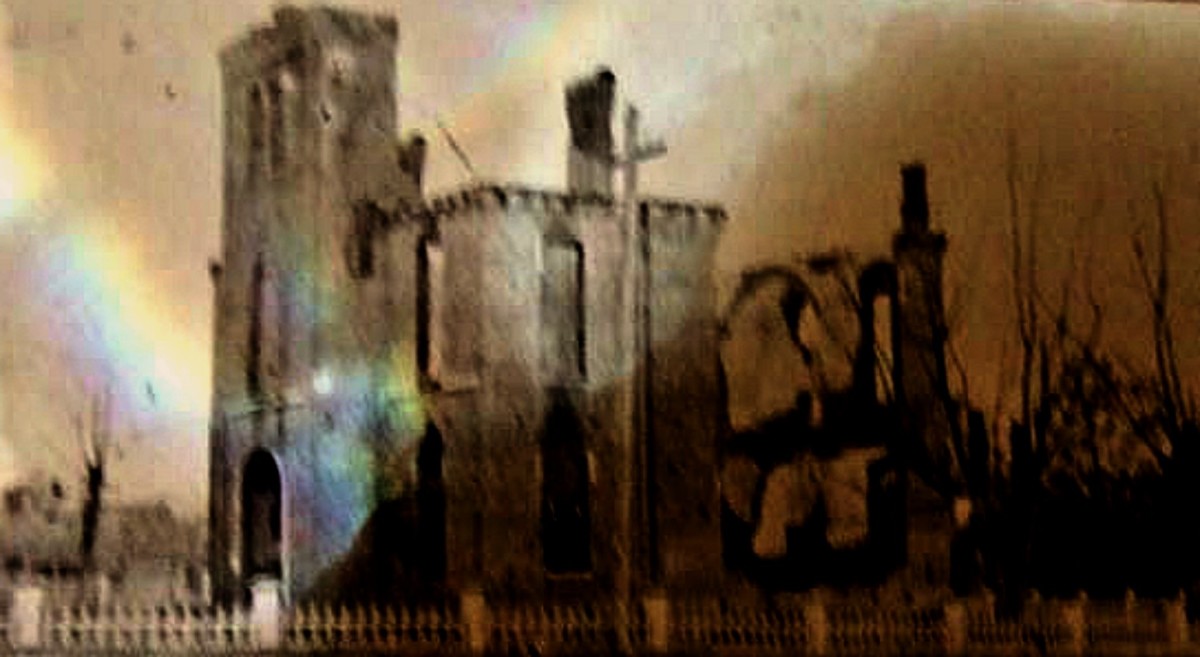The Ancient Library of Alexandria
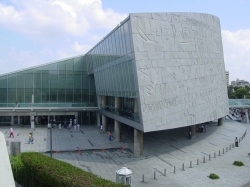
The History of the Legendary Library at Alexandria
Alexandria was one of the great meccas of the ancient world. It was built into a huge ancient city by Alexander the great and remained a central hub given its proximity to Europe (Rome and Greece), Africa and the Middle East. While Cairo is now the largest city in Egypt, Alexandria once stood as the greatest city in the World. The Library at Alexandria was considered one of the great world treasures both for its architecture and its immense bank of knowledge.
Alexandria has since become one of my favorite cities in antiquity - precisely because it was a city of learning and of knowledge.
Ever since I first saw Carl Sagan's Cosmos, I have accumulated a large amount of information, as well as several books on the history of the Ancient Library of Alexandria, as well as on the city.
To clarify the issue, I am using a picture of the NEW Library of Alexandria (called the Bibliotheca Alexandrina) for my introduction image - because there are no out-of-copyright freely available images of the ancient library.
Image Source - Wikipedia Commons - Bibliotheca Alexandrina - the new Great Library of Alexandria - inaugaurated in 2002.
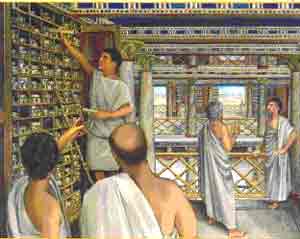
Just the facts, ma'am
Most of us are aware of the basic facts of the city of Alexandria.
The city was mapped out by Alexander the Great in the year 330 BCE
The Library itself was founded by Ptolemy I, Soter in 283 BCE.
The library consisted of 2 buildings - the Royal Library - down near the Harbour - and the Daughter Library - also called the Serapeum - because it was housed in a temple that was dedicated to the god Serapis.
It is said that agents of the library were sent out all over the Mediterranean looking for books. All ships docking in the Alexandria harbour were searched for books. If any books or scrolls were found, the originals were taken to the library, copies made and the copies returned to the ship owners.
At the height of its fame, the Library housed between 700,000 and 1 million books (or scrolls).
The Royal Library was destroyed around 45 BCE when Julius Caesar landed in Egypt. For some reason a fire broke out at the harbour and the Royal Library was burnt down and destroyed.
The Daughter Library was partially destroyed after 391 CE and possibly completely destroyed around 415 CE when Hypatia was killed.
Image source - Baltimore Friends of the Bibliotheca Alexandrina
History Books about Alexandria
The Librarians
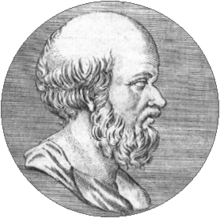
Some of the most well known names from ancient history were appointed to be in charge of the Alexandria library. Some names include
Aristarchus of Samothrace
Aristophanes of Byzantium
Eratosthenes
Appollonius of Rhodes
Callimachus - Who wrote the first Library Catalogue
Theon of Alexandria - Who is said to have been the Last Librarian before its final destruction.
Image source - Eratosthenes - Wikipedia Commons.
Alexandria Library - as imagined by Carl Sagan on Cosmos
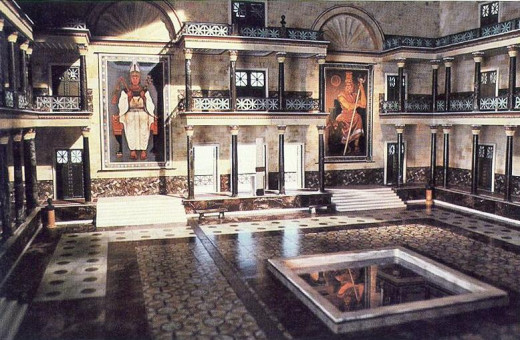
This was Carl Sagan's view of the Library of Alexandria. He shared it with us in the first episode of his TV series Cosmos that first aired in 1980. You can see part of that episode below. This image comes from The Ancients. The portraits on the back wall show Alexander the Great on the left and the God Serapis on the right.
The Library of Alexandria - Cosmos by Carl Sagan
Carl Sagan called the Library of Alexandria - The Brain and Glory of the Greatest City on the Planet Earth.
More History Books on Alexandria
Alexandria Map
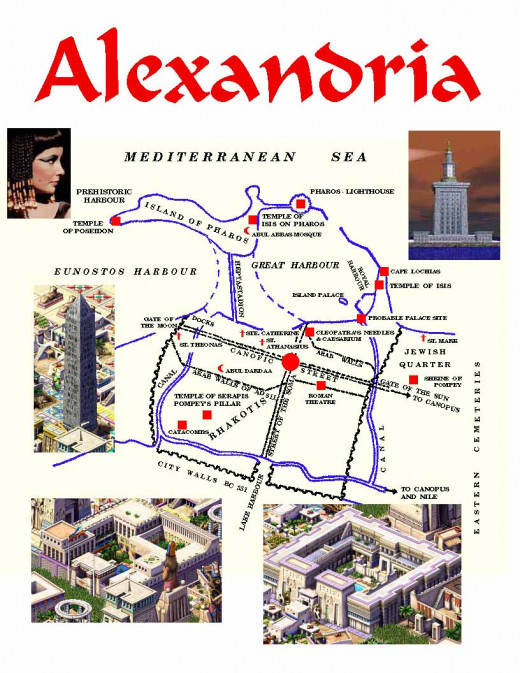
I put this little collage together way back in 2003 - when I was writing for the PanHistoria community.
The 2 pictures at the bottom and the pillar on the left are screenshots from the Pharoah Video Game, originally released in 1999.
The picture of Elizabeth Taylor comes from the 1963 movie Cleopatra.
The map of Alexandria seems to have been designed specifically for a role playing game set in Victorian Times, called Chateau Falkenstein
I believe the image of the Pharos lighthouse at top right comes from this Models page.
Other Ancient Libraries
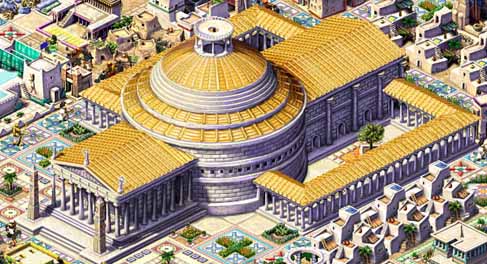
Alexandria was not the only library in Antiquity, but it was the biggest. This is a brief list of other libraries that existed around the same time that the Library of Alexandria was in existence.
Egypt
Hermopolis
In the temple of Thoth one of the largest papyri collections on medicine was found. There were six intact, plus fragments of many others. A scribe-priest was known as the keeper of the sacred books. His assistant, a woman, was known as the lady of letters, mistress of the house of books. There was also a medical school at the temple.
Persia
Nisibis
About 485 CE, the Nestorian Christians who fled from Syria built this library. It was a good source of Greek science and philosophy. Scholars from Greece were attracted here. By 750 CE, the Moslems, seeing the value of this library, translated many of the books into Arabic.
Asia Minor (now Turkey)
Library of Celsus at Ephesus
This library was designed by the Roman architect Vitruoya and construction took place from 110 CE to 135 CE. This library was built in the memory of the Roman senator and General Governor of Asia Minor, Celsus Polemeanus. He was the father of Julius Aquila who financed the construction. This library was said to have held between 12,000 and 15,000 scrolls and books. The original library also held 4 female statues representing wisdom (sophia), knowledge (episteme), intelligence (ennoia) and virtue (arete). The inside of the library was burned during a Goth invasion in 262 CE, and an earthquake destroyed the rest of the building in the 10th century CE.
Naples
The Villa of the Papyri at Herculaneum
This was the private library of L. Calpurnius Piso, a collection of about 3,000 rolls, encased in wooden boxes. The majority of the rolls were philosophic works of the Sophis school. There were some works of medicine, literary criticism, and general literature. Most of them were in Greek, but there were some in Latin. The library was destroyed by the eruption of Mount Vesuvius.
Rome
Atrium
This collection of Cicero was maintained both in the city and in country villas. A specialist was used in setting up the libraries. Highly trained Greek slaves served as library personnel. Copying was a major work, but reshelving, repairing, and keeping the catalogue up-to-date were functions that they performed. Parchment was used to place the author's name on the end of each roll. There was also the problem of theft that had to be handled. This library was used primarily by researchers.
Private Library of Lucullus in Rome
This private collection of Lucullus existed after 66 BCE. It was collected in Asia Minor as booty. The layout of the building was based on the library at Pergamum. In a room about three meters by three meters, the walls were lined with shelves with rolls piled high. The books were in Greek; but later, some in Latin were added. The library was open to friends and relatives of Lucullus, but also to Greeks living in Rome. Patrons from Greek states in Asia Minor came to use the library.
Atrium Libertatis on Libertine hill in Rome
The first-known public library was opened about 37 BCE. The founder was G. Asinius Pollio, who, with his own wealth, consolidated several collections and reorganized the public archives there. The interior was adorned with the busts of the great writers. The collection was made up of Greek and Latin literature.
Apollo's Library
Built between 36 and 28 BCE by Emperor Augustus, this temple was located at the temple of Apollo, on the Palatine Hill. It was divided into Greek and Latin sections. The first librarian was Pompeius Macer, and a later librarian was Julius Hyginus. The library was enlarged by Emperors Tiberius and Caligula. Although damaged by fire twice, it lasted into the 4th century CE.
Octavia's Library
Founded by Ocatavi, sister of Augustus, this library was located in the Porticus Octaviae.. The first librarian was Caius Melissus. The library was damaged by fire about 80 CE, but it survived into the 2nd century CE.
Vespasian's Library
Emperor Vespasian established a library in 76 CE. It included books taken from Jerusalem when that city was captured by the Romans. According to Josephus, the Jewish historian, it contained copies of the books of Moses. The library was damaged by fire about 190 CE, but it was restored and lasted into the 4th century CE.
Ulpian Library
This was considered to be the greatest of the Roman libraries. It was founded in 114 CE by Emperor Trajan. It may have been based on the private library of Epaphrodites of Cherones. The collection included about 20,000 rolls, which was divided into Greek and Latin sections. Early in the 4th century BCE, it was moved to the Baths of Diocletian. However, it was later returned to its original site. It was still in existence in 455 CE.
Library of Caracalla
This library was begun at the Baths of Caracalla in 212 CE and completed ten or more years later. There were two rectangular chambers set into the enclosure wall, opening at the front to the colonnade. Along the short walls were niches for bookcases.
San Lorenzo Library
In the latter half of the 4th century CE, Pope Damasus I established this library in the church of San Lorenzo. At first, it was only an archive. Later, this was transferred to the lateran Palace. Eventually, the library included not only Bibles but also various Christian theologcal writings. It did not include non-Christian writings for a long time because of the official attitude toward those.
Image Source - Screen shot from the Pharoah Video Game
Alexandria - the Greatest City - Documentary by Brittany Murphy
This is a documentary about Alexander the Great, about the scientist, mathematician and philosopher called Hypatia, and about the city of Alexandria.
This documentary also shows footage of Amenabar's last film "Agora" starring Rachel Weisz. The movie, AGORA, released in 2009, is available on Netflix. The ending of the movie (regarding Hypatia's death) is not accurate. Hypatia was killed in 415 CE. There is a movie trailer linked below as well.
Hypatia died a horrible death. She was dragged from her carriage, her clothes and robes torn from her body and then she was flayed alive with either ostraka (broken and sharp pieces of pottery) or with oyster shells - the sources seem to differ. Her body was then burned on a pyre as the city of Alexandria also burned and all the worlds knowledge was lost.
The knowledge that was lost from the Alexandria Library is incalculable. There are brief mentions of authors and books in those classics that did survive. But those books that are mentioned have been lost for 1600 years and we will never know what they said.
The new Biblioteca Alexandrina is the modern version of the ancient Library of Alexandria and was opened in 2002.
The Library of Alexandria - Documentary
Resources
- Great Libraries of the Ancient World
Wikipedia - Bibliotheca Alexandrina
Official website - Ancient Roman Libraries
Maria Milani



